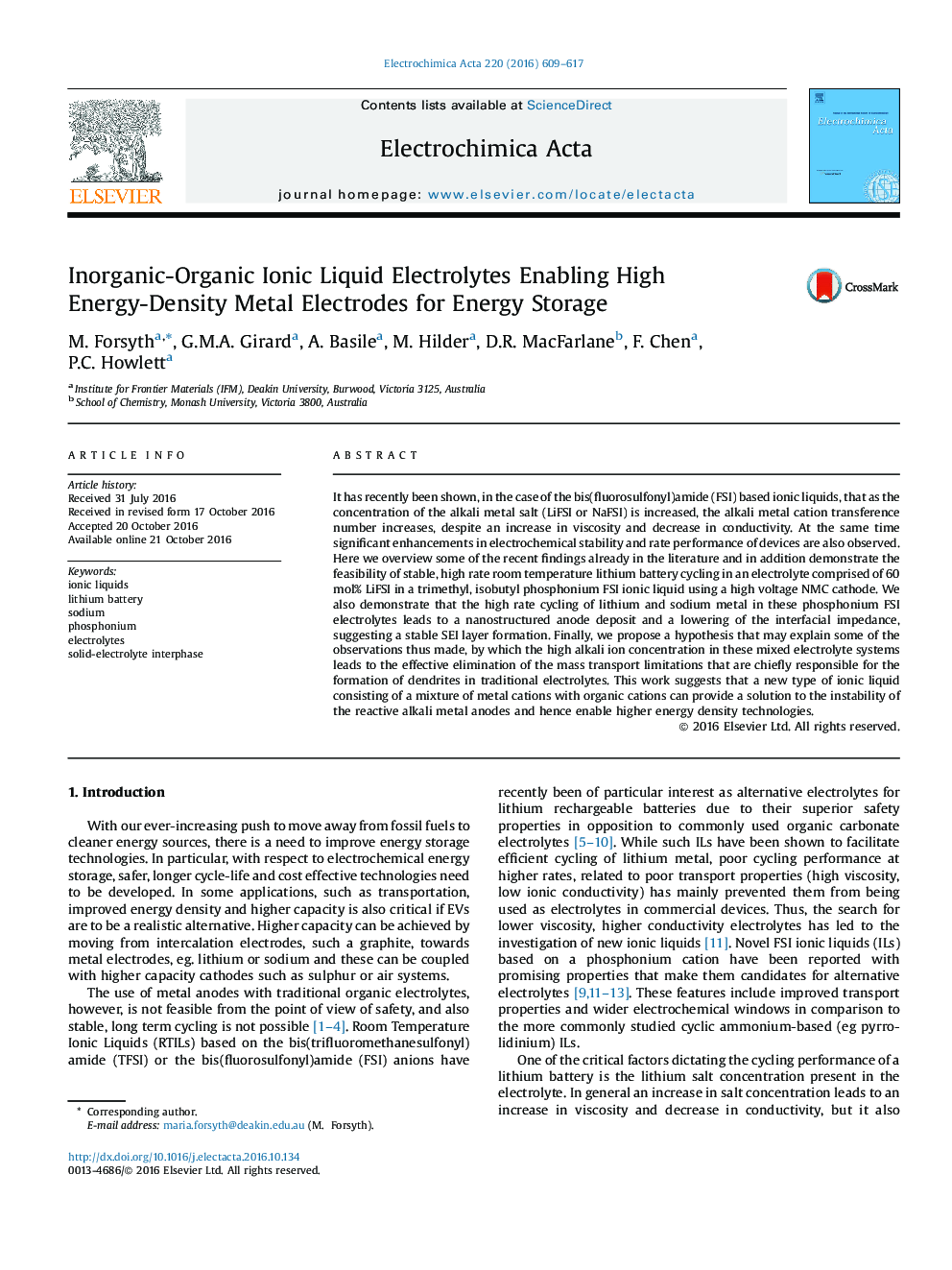| Article ID | Journal | Published Year | Pages | File Type |
|---|---|---|---|---|
| 6472450 | Electrochimica Acta | 2016 | 9 Pages |
Abstract
It has recently been shown, in the case of the bis(fluorosulfonyl)amide (FSI) based ionic liquids, that as the concentration of the alkali metal salt (LiFSI or NaFSI) is increased, the alkali metal cation transference number increases, despite an increase in viscosity and decrease in conductivity. At the same time significant enhancements in electrochemical stability and rate performance of devices are also observed. Here we overview some of the recent findings already in the literature and in addition demonstrate the feasibility of stable, high rate room temperature lithium battery cycling in an electrolyte comprised of 60 mol% LiFSI in a trimethyl, isobutyl phosphonium FSI ionic liquid using a high voltage NMC cathode. We also demonstrate that the high rate cycling of lithium and sodium metal in these phosphonium FSI electrolytes leads to a nanostructured anode deposit and a lowering of the interfacial impedance, suggesting a stable SEI layer formation. Finally, we propose a hypothesis that may explain some of the observations thus made, by which the high alkali ion concentration in these mixed electrolyte systems leads to the effective elimination of the mass transport limitations that are chiefly responsible for the formation of dendrites in traditional electrolytes. This work suggests that a new type of ionic liquid consisting of a mixture of metal cations with organic cations can provide a solution to the instability of the reactive alkali metal anodes and hence enable higher energy density technologies.
Related Topics
Physical Sciences and Engineering
Chemical Engineering
Chemical Engineering (General)
Authors
M. Forsyth, G.M.A. Girard, A. Basile, M. Hilder, D.R. MacFarlane, F. Chen, P.C. Howlett,
